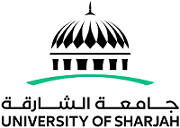Modeling Sharjah's Travel Mode Choice Using Machine Learning
وكيل مرتبط
Hamad, Khaled., مشرف الرسالة العلمية
Balwan, Mohsin, joint ., مشرف الرسالة العلمية
تاريخ النشر
2022
اللغة
الأنجليزية
الكلمة الدالة
نوع الرسالة الجامعية
Thesis
الملخص
Travel mode choice is one of the four steps in modeling an accurate travel demand forecasting model. Since the 1960s, researchers and professionals have utilized classical statistical techniques to model a travel mode choice of individuals. Such an approach worked successfully for a long period. Modeling mode choice is highly complex due to the various independent features involved in the trip decisions. Such variables include those related to characteristics of available modes, trip-maker characteristics, trip characteristics, as well as social and cultural factors. This complexity is very challenging for classical techniques for modeling travel mode choice, such as the multinomial logit method. Recently, many researchers utilized Machine Learning (ML) techniques when developing mode choice models to overcome the challenges faced by the classical approach. In this study, three ML approaches, namely Artificial Neural Network, Support Vector Machine, and Random Forest, were utilized to develop mode choice models for Sharjah City. These ML models were also compared to a classical MNL model developed using the same dataset. The data used in this study was provided by Sharjah Road and Transportation Authority (SRTA) which was collected using a revealed preference survey. Around 16,200 observations were used as the data sample size after the data cleaning process. Fifteen different variables were considered to examine their impact on the travel mode choice in Sharjah. These variables are split into three categories: trip-maker characteristics (i.e., age, gender, and driving license), trip characteristics (i.e., time and period of the trip, trip distance, mode of transportation), and socioeconomic factors (i.e., number of family members, and family income). The performance of the developed ML and classical mode-choice models for Sharjah were analyzed and compared. The RF model performed the best among all the models, with an accuracy of 92.4%. The SVM model performed excellently with an accuracy of
ملاحظة
Includes appendices;Thesis Submitted in Partial Fulfillment of the Requirements for the Degree of Master of Science in Civil Engineering.
القالب
أطروحات
تصنيف مكتبة الكونجرس
QA76.9.A43 A493 2022
المعرف المحلي
b15409661







